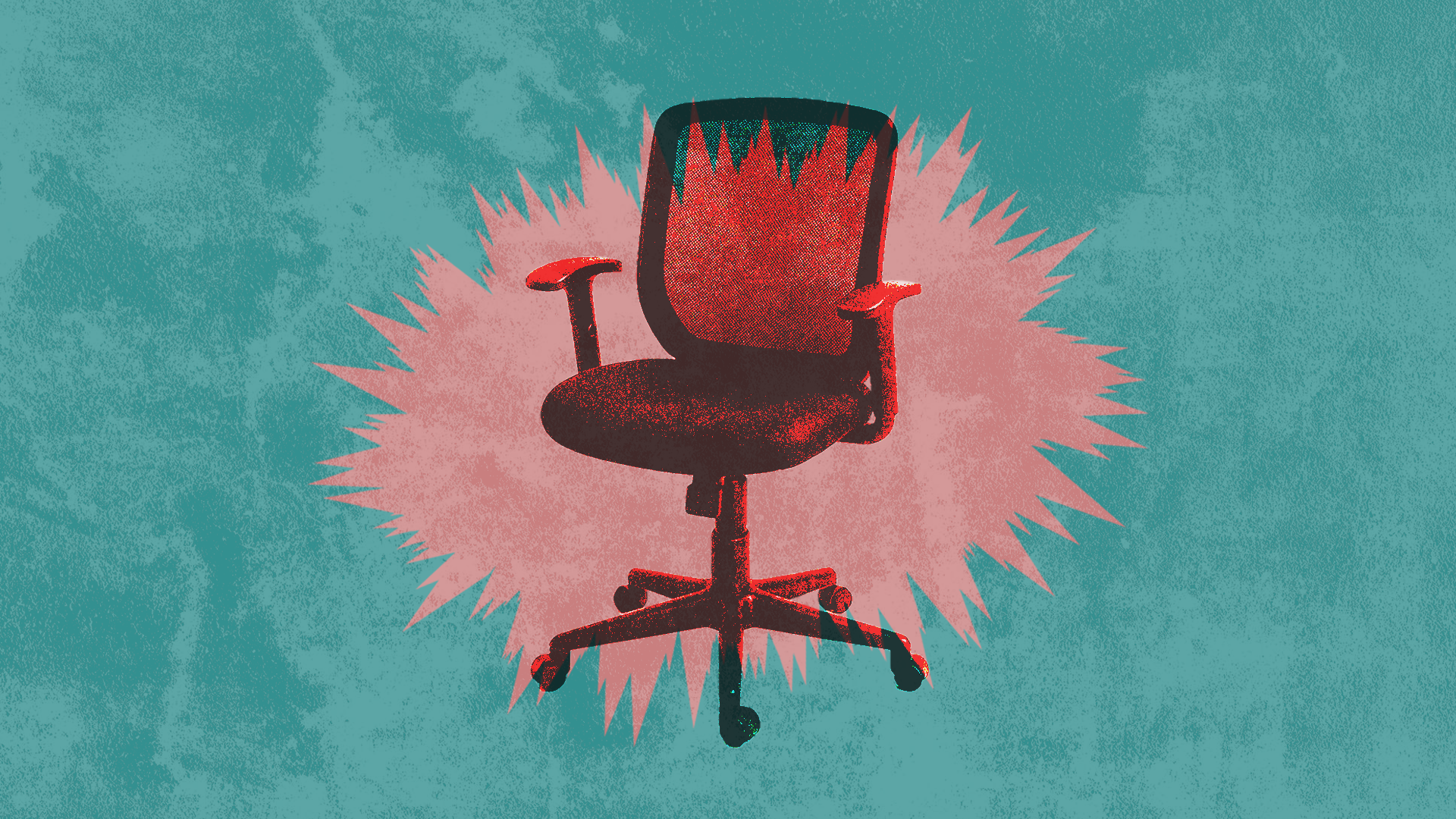#workplace-culture
#workplace-culture
[ follow ]
#remote-work #employee-engagement #leadership #hybrid-work #gen-z #return-to-office #work-life-balance #boundaries
fromFast Company
5 days agoIs the retirement party dead?
When Greg Giczi retired in February, his company threw him a party. Giczi had spent 12 years as president and general manager of WNIT-TV, a public television station based in South Bend, Indiana. Public broadcasting isn't known for lavish budgets, so the party took place at the studio-a "big, open space with dramatic lighting," Giczi describes. There were appetizers, wine, and beer, as well as heartfelt speeches.
Retirement
Careers
fromSlate Magazine
4 days agoMy New Co-Workers Want to "Break the Ice" With Stories About the Past. I Don't Think They Want to Hear Mine.
Avoid competing with coworkers' adolescent stories; steer conversations toward neutral adult topics, ask questions about hobbies and local recommendations, and draw coworkers out about their talents.
fromBig Think
3 days agoA cure for toxic work
Everywhere I turn - podcasts, research calls, dinner conversations - people are talking about "toxic workplaces." The phrase has become ubiquitous; almost unavoidable. So I did what most researchers do when they're curious (or procrastinating): I Googled it. That led me to a chart showing the term's meteoric rise beginning in the early 2010s. The curve shoots upward like a fever.
Psychology
fromTechzine Global
1 week agoWomen in tech: what are the challenges and how to overcome them?
These questions were central to a recent roundtable discussion that we hosted together with Visma. There seems to be a growing awareness that diversity in teams is more than just a moral goal. It demonstrably leads to better performance and innovation. Companies with inclusive teams can leverage new perspectives and innovate more quickly. The key question, therefore, is how organizations can attract women and enable them to grow sustainably toward leadership positions.
Women
fromInside Higher Ed | Higher Education News, Events and Jobs
1 week ago4 Ways Chairs Can Develop Relational Attention (opinion)
Chairs have choices about how to organize meetings, help staff feel included or excluded, coach new assistant professors about participation norms, and assign people to committees. How chairs do these routine tasks can have powerful effects on how department members relate to one another and the quality of relationships that develop. Cumulatively, small moments of interaction have a profound influence on a department and its culture
Higher education
Social justice
fromNon Profit News | Nonprofit Quarterly
1 week agoBuilding a Collective Future: A Conversation with Niloufar Khonsari - Non Profit News | Nonprofit Quarterly
Collective governance and care-centered workplace strategies strengthen organizations through shared leadership, rooted practices, and acknowledgment of Indigenous, BIPOC, and gender-expansive wisdom.
fromBusiness Insider
2 weeks agoThe rise of 'vibe working'
It started with coding. Generative AI's aptitude for writing code was the death knell for traditional software development, and companies wanted "vibe" coders. Big Tech execs have been praising the vibes this year: Sundar Pichai is vibe coding a web page, Mark Zuckerberg says AI is coming for mid-level engineering work, and Klarna CEO Sebastian Siemiatkowski says he's become an amateur coder thanks to vibe coding. Startups are vibe-coding their way into existence.
Artificial intelligence
Business
fromFortune
2 weeks agoJPMorgan CEO Jamie Dimon says if you check your email in meetings, he'll tell you to close it: 'it's disrespectful' | Fortune
Undivided attention in meetings signals respect; eliminate unnecessary meetings and enforce clear goals, defined outcomes, strict timing, and only required attendees.
fromInfoQ
2 weeks agoCreating Impactful Teams Across Diverse Work Environments
How did I manage to convince my Fitbit that I had a rigorous workout in the middle of the workday? It was not a treadmill desk, though I do have one of those at home. Also, not a trick. I did not put my Fitbit onto my cat and make her run around the apartment. It was actually quite a serious answer. It was a clash with a co-worker that made my heart rate go up to 140
Remote teams
Artificial intelligence
fromFortune
3 weeks agoFrom 'fear factor' to 'cognitive fatigue': KPMG principal on the quarter when everyone started thinking about AI differently | Fortune
AI agent deployments surged from 11% to 42% in six months, adoption accelerated, resistance fell, and human oversight remains necessary due to immature capabilities.
fromBusiness Matters
4 weeks ago'We're like a family here': why this interview cliche could signal a toxic workplace
"One of the most recognised signs of a toxic workplace is when the hiring manager says something along the lines of the team being like a family," says Duris. "This might imply that you'll be expected to constantly go above and beyond and sacrifice your personal time." Duris adds that while some genuinely nurturing workplaces do use the "family" metaphor to describe a supportive culture, jobseekers should be cautious if it's paired with other warning signs - such as vague answers, long hours, or visible stress among employees.
Careers
Startup companies
fromBusiness Insider
1 month agoMarissa Mayer is throwing in the towel on her AI-based photo-sharing app. Now she's focused on an AI personal assistant.
Sunshine is shutting down; its Shine app underperformed and employees and assets will transfer to Mayer's new company Dazzle building an AI personal assistant.
UK politics
fromwww.theguardian.com
1 month agoPerhaps only civil servants and I believe it, but 'networking' is the stuff life is made of | Viv Groskop
The Cabinet Office requires networking meetings to occur outside working hours with senior sign-off, provoking concerns about morale and overly prescriptive workplace rules.
Startup companies
fromFortune
1 month agoDuolingo's CEO tells new hires his company is 'allergic' to toxic behavior-and not to 'work yourself to death' | Fortune
Prioritize kindness, take initiative to fix problems, and align priorities with company mission while maintaining work-life balance; toxic behavior is rejected.
fromFast Company
1 month agoBest Workplaces for Innovators 2025: International
The international category recognizes best workplaces for innovators based in regions beyond North America that have invested in human capital and innovation infrastructure in their home markets. Leveraging internal innovations and outside expertise, the climate fintech company created a tool to customize investment portfolios for businesses pursuing decarbonization. ESR, Shenzhen, China The real estate asset management company tripled the size of its R&D team last year to continue nurturing new ideas, such as its new MagSafe wireless mouse.
Business
fromSlate Magazine
1 month agoEvery Workplace Has Their Own Little Traditions. These Take Things Way, Way Further.
PB&J Parties Let's face it, most office routines aren't exactly thrilling. You answer emails, survive meetings that could have been a Slack message, and silently curse your co-worker for not saving the spreadsheet you need on the shared drive. But some offices have embraced the weird and wonderful, establishing traditions that range from hilarious to outright bizarre. Here are 15 of the greatest work traditions I've heard about from readers.
Careers
fromBuzzFeed
2 months ago22 Subtle Red Flags People Wish They'd Noticed About Their Jobs Much, Much Sooner
With the exception of a client's building burning down, any rush job means that someone, somewhere, didn't do his or her job. So if an account executive wound up having a rush job, he or she wasn't allowed to blithely make the request and then go home for the night. Instead, if the creative team was staying late, the account executive had to stay late too. Amazing how that cut down on rush jobs.
Marketing
fromPsychology Today
2 months agoSilent Burnout Amongst High-Achieving Women
Many high-achieving women are living with burnout without even realising it. On the outside, they appear calm, capable, and in control. They're delivering results, meeting deadlines, and holding space for their colleagues and teams. They are often the people others turn to for answers and support. Yet on the inside, the story can be very different. These women are running on empty. They are exhausted, disconnected from themselves, and quietly burning out.
Women
Business
fromFortune
2 months agoI'm the president of a $1 billion software unicorn and I've seen the 'Gen Z stare' disappear in healthy workplaces. It's a wake-up call for hospitality
Gen Z frontline workers prioritize authenticity, purpose, flexible work, and intuitive technology, leading to more genuine customer interactions in hospitality.
fromwww.theguardian.com
2 months agoHate your job? How to have more fun at work - from thin-slicing' your joy to expressing your personality
After the work-centric hustle culture of the 2010s, then the backlash and widespread burnout brought on by the Covid-19 pandemic, the general feeling around work right now could be described as ambivalent at best. At worst, it's openly combative, as evinced by frequent references to the battle over working from home. Managers want employees back in the office; employees want flexibility, and to limit work's impact on their lives.
Wellness
[ Load more ]






















